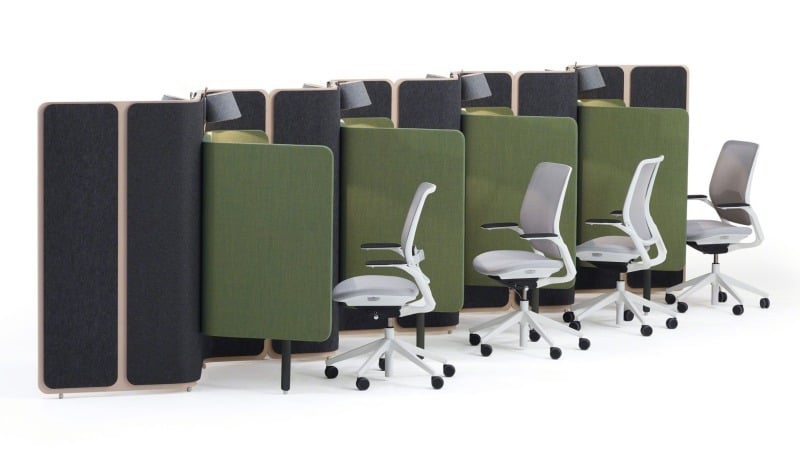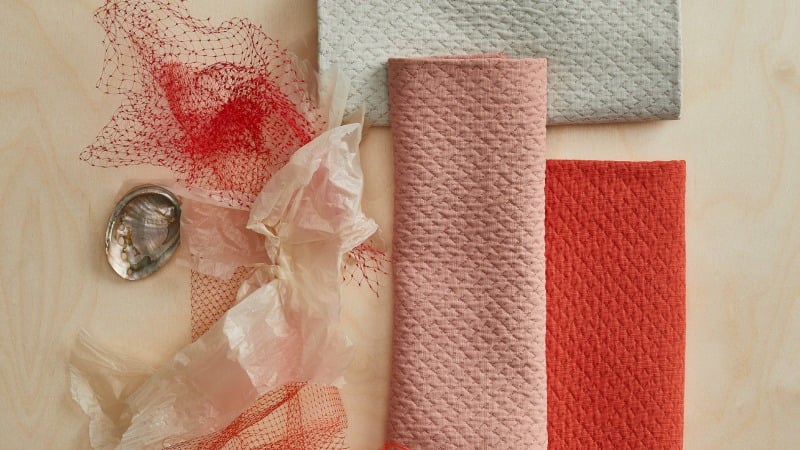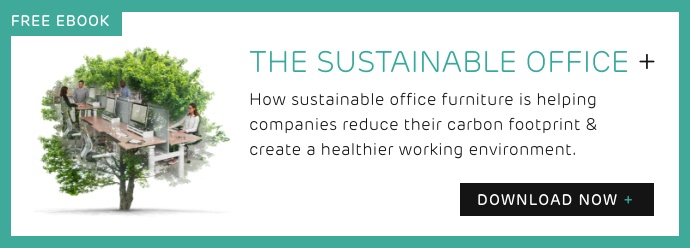ESG initiatives have moved their way up the executive agenda and a company’s commitment to sustainability is becoming as important, if not more so, as its bottom line.
We are seeing more stakeholders and employees expecting a measurable commitment to sustainable best practice in every business area, including within the workplace.
More attention is now being paid to the materials used in office design and furniture. Companies can reduce their environmental and social impact by choosing office furniture upholstered in natural fabrics that have been sourced sustainably. We explore the benefits of natural fabrics and highlight some of the best options available.
What are natural fabrics?
Natural fabrics are made from fibres derived from natural sources such as plants or minerals. The raw, natural fibres are spun into threads and yarns that are then woven or knit into natural fabrics.
These fabrics are more environmentally friendly than synthetic fibres (like nylon and polyester) and are not hazardous to those who work with them or use them daily. They are also highly durable and therefore last far longer than synthetic alternatives.
What are the benefits of using natural fabrics in the workplace?
Here’s how using long-lasting natural fabrics in the workplace can benefit your business:
- Reduces the impact of your office furniture on the environment
- Furniture tends to last longer - further reducing your carbon footprint and saving you money
- Maximises employee comfort (natural fabrics tend to consist of soft, flexible, and breathable fibres)
- Natural colours and distinctive textures enhance the aesthetics of your working environment
Whether you’re looking to purchase new office seating or to reupholster your existing furniture, here are some natural fabrics to consider.
1. Linen
Linen is a strong, lightweight fabric that has been used for centuries. It’s made from flax, a versatile crop that’s easy on the environment. Flax can be grown without fertilisers and planted in areas where most other crops fail to thrive. And as flax can be used in its entirety - seeds, oil, and crop included - there’s no waste.
Linen is a popular choice for office furniture as it’s a natural fabric and it's hard-wearing, breathable, and naturally antibacterial and hypoallergenic. Linen is also easy to clean and has a luxurious, aesthetically pleasing look.
2. Hemp
Hemp is made from fibres derived from the stalks of the Cannabis sativa plant. It has long been recognised as a sturdy and highly durable fabric. It can handle extra wear and tear, making it a great long-lasting choice.
From a sustainability standpoint, hemp is also more gentle on the environment than many other crops. It’s fast-growing, doesn’t exhaust the soil, and doesn’t require pesticides. It is already organic, however some brands use ‘hemp viscose’, which is harmful to the environment. So when choosing furniture made from hemp, it’s always worth checking that its materials are 100 percent organic.
3. Wool
Wool is a natural, biodegradable fibre used for centuries and is an excellent option for office furniture. It’s strong, hard-wearing, and naturally insulating, making it comfortable in all temperatures. Wool is also naturally flame-retardant, which means wool doesn’t require any treatment to meet fire safety regulations. Plus, wool is incredibly resilient, as each fibre has natural spring-like properties that help it to keep its shape.
Unfortunately, there can be a lot of animal abuse in the wool industry, so it's essential to vet brands to verify sourcing and production methods. But when wool is sourced sustainably, it’s a great choice. Wool comes in many natural colours but can be easily dyed in hundreds of long-lasting colours.
4. Felt
Felt is a man-made fabric created from natural fibres, including wool and other materials. It is made from the fibres being compressed and matted. Adding some synthetic fibres into the mix can improve the durability of the products for specific uses.
For example, the felt panels on the Coppice work booth from Orangebox have excellent acoustic properties.

5. Bamboo
This fabric has many properties, making it an excellent choice for office furniture. Bamboo is soft, hypoallergenic, anti-static, absorbent, and breathable.
On the environmental side, it’s fast-growing and doesn’t need pesticides to grow. However, to be recognised as sustainable, it must be made with production practices that do not extract cellulose (as this requires toxic chemicals).
With sustainable bamboo fabric, a natural enzyme is used on crushed bamboo wood fibres, and these fibres are then washed and spun into yarn. It tends to have a silky texture and is sometimes called bamboo linen. When properly made, bamboo fabric is incredibly comfortable and long-lasting, making it a top choice with sustainable brands.
6. Cotton
Cotton is a natural fabric that is strong and incredibly long-lasting. Cotton doesn’t create any plastic pollution, though conventionally grown cotton involves the use of water and pesticides. Plus, most non-organic cotton seeds are genetically modified organisms (GMOs).
When cotton is organically grown, it is produced without any pesticides, chemicals, or GMOs. Organic cotton still requires a fair amount of water to grow and process, but it is much easier on the planet than conventional cotton. Unsurprisingly, the most sustainable option is recycled cotton, which uses fewer resources.
Cotton is often favored as it’s soft, easy to clean, breathable, hypoallergenic, and easily resists pilling and abrasion.
7. Reclaimed fabrics
Reclaimed fabrics can be incredibly long-lasting. They can be made from unused material that would otherwise be tossed from the factory. Manufacturers keep sustainable textiles from landfills by using this ‘deadstock’.
An example is Steelcase’s Gabriel Loop collection. Here, textile waste is shredded, melted into pellets, mixed with recycled polyester from used plastic bottles, and spun into a new yarn. This resulted in a new textile made entirely of waste.
Fabric can also be created from other waste. One example is Intersection, a fabric made from upcycled marine plastic. Developed by Steelcase in partnership with Duvaltex, the fabric is exclusive to the new Steelcase Karman chair (now available in the UK). Marine litter is collected through SEAQUAL INITIATIVE clean-up programs and turned into upcycled marine plastic. Duvaltex takes the upcycled marine plastic and turns it into SEAQUAL® YARN, which is then weaved into the Intersection fabric used in the Karman chair.
“The impact is staggering: for every yard of Intersection, half a pound of plastic waste is removed from the ocean.”
Summary
There are many things businesses can do to make their workplaces more sustainable. Choosing upholstery fabric made from natural materials is one of them. Linen, hemp, wool, bamboo, (organic or recycled) cotton as well as reclaimed fabrics are some of the most long lasting and sustainable fabrics available. Office furniture manufacturers today are turning their attention to these natural fabrics to help meet both their own and customers’ ESG commitments.










